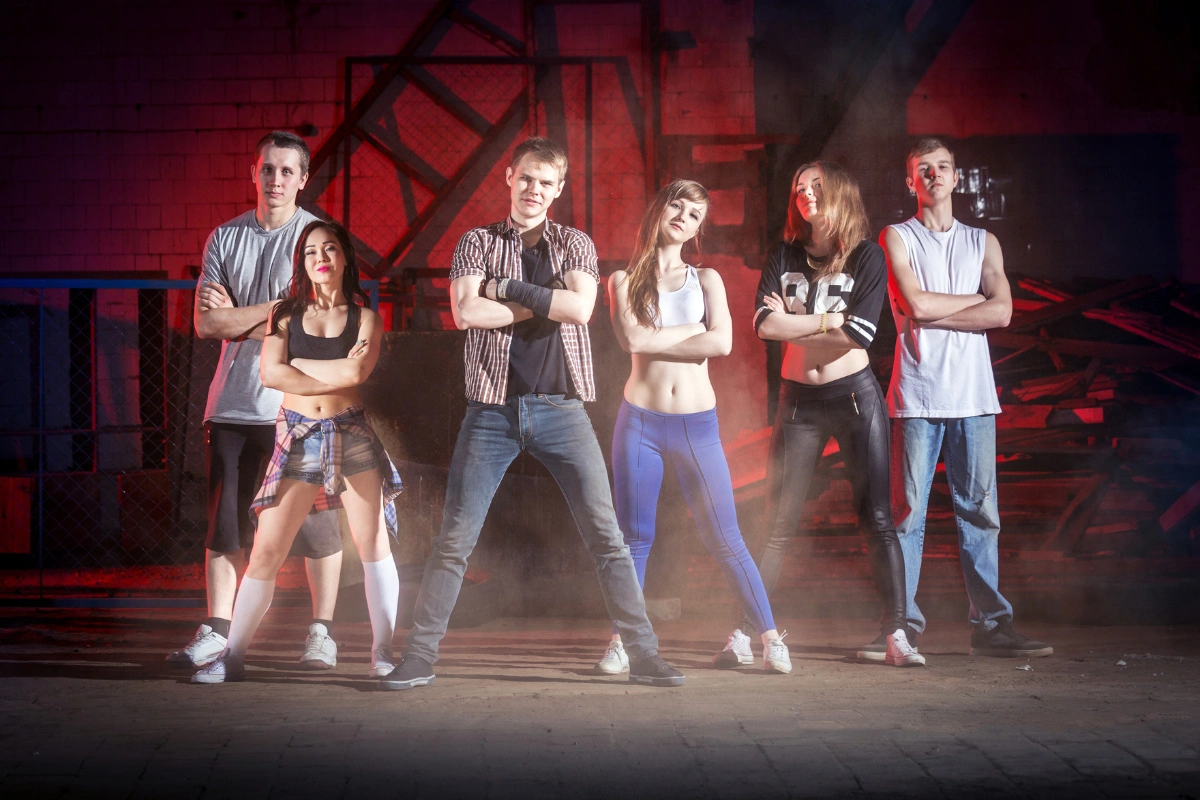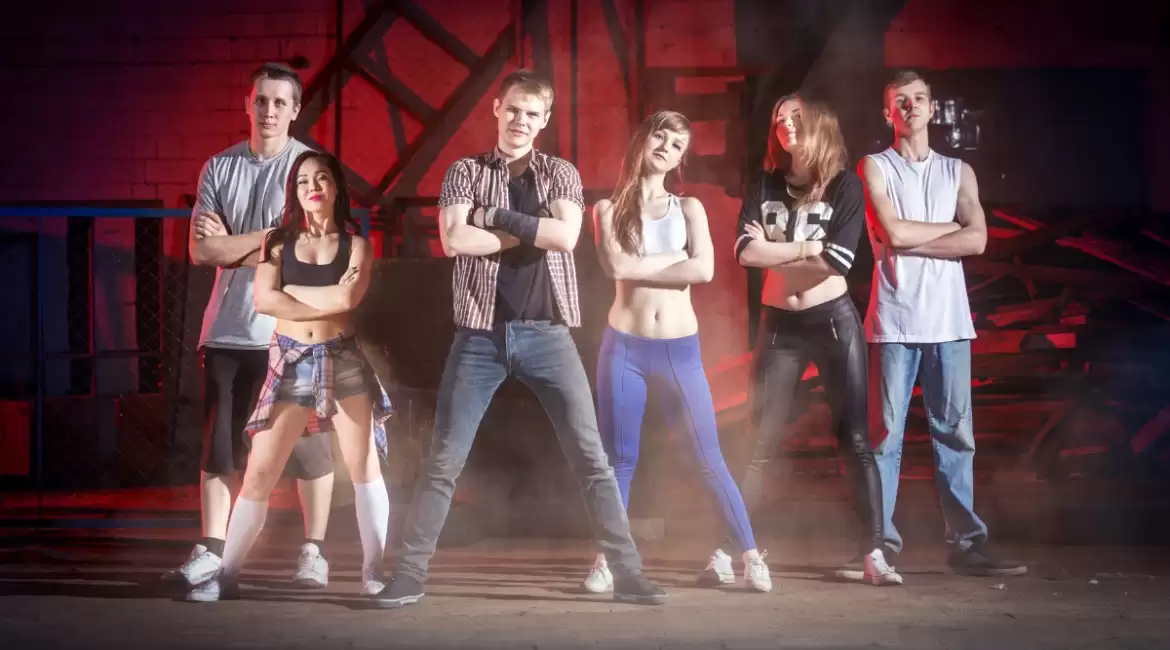Building and sustaining healthy relationships within the dance community is essential for fostering a supportive and enriching environment where dancers can thrive personally and artistically. As dancers, we understand the profound impact of camaraderie, mutual respect, and collaboration on our journey of self-expression and growth. Whether we are members of a dance team, part of a studio, or involved in the broader dance community, nurturing positive connections lays the foundation for a vibrant and flourishing dance culture. In this exploration of “Ways to foster healthy relationships within the dance community,” we delve into practical strategies and principles that promote inclusivity, communication, and empathy. By embracing these approaches, we not only enhance the quality of our interactions but also cultivate a sense of belonging and unity that enriches our shared passion for dance.
Positive Relationships Between Directors And Dancers
- Leading by Example: Directors should embody the values they preach. If you advocate for more training, ensure you’re actively participating in classes. Actions speak louder than words, and your team will draw inspiration from your commitment.
- Recognizing Individuality: Amidst the collective effort, it’s vital to acknowledge each dancer as a unique contributor. Beyond performances and accolades, prioritize understanding and appreciating the individuals within your team.
- Acknowledging Efforts: Simple words of encouragement can have a profound impact. Take the time to praise your team members sincerely. A genuine “Well done!” or “Great job!” fosters a positive atmosphere and boosts morale.
- Providing Structure: While directors hold authority over rehearsal schedules, providing a rough plan instills a sense of ownership among dancers. Transparency about time allocation alleviates anxieties and enhances trust within the team.
- Cultivating Positive Energy: As a leader, your demeanor sets the tone for rehearsals. Harness the power of positivity to uplift spirits and motivate your dancers, recognizing the influence your attitude holds over the team dynamic.
- Effective Communication: Mindful communication is key to fostering mutual respect. Avoid accusatory tones and prioritize clarity and professionalism in your interactions. Start and end conversations on a positive note to maintain harmony.
- Clear Artistic Vision: Artistic cohesion stems from transparent communication of your vision. Presenting ideas clearly and comprehensively ensures alignment among team members, minimizing misunderstandings and fostering unity.
- Aligning with Mission: Embrace and embody your team’s mission, inspiring dedication and commitment from each member. A shared sense of purpose cultivates intrinsic motivation and fosters a cohesive, driven team.
- Balancing Leadership and Friendship: Navigating the roles of leader and friend requires authenticity and empathy. Strengthening personal connections with team members facilitates a natural balance between authority and camaraderie.
- Embracing Enjoyment: Amidst the challenges, remember to celebrate the joy of dance. As a leader, infuse rehearsals with enthusiasm and remind your team of the inherent fun in their craft, nurturing a positive and fulfilling environment.

Positive Relationships Between Dancers And Directors
- Recognizing Leadership Efforts: Leadership often appears seamless from the outside, with rehearsals running smoothly and performances executed flawlessly. However, behind this facade lies a staggering amount of effort, commitment, and sacrifice. It’s essential for dancers to acknowledge the unseen toil and dedication of their leaders. Despite the invisibility of their labor, there exists an unwavering commitment to the team’s success. Therefore, it’s crucial for dancers to refrain from hasty judgments or criticisms and instead, cultivate deep respect and appreciation for the relentless dedication of their leaders.
- Seeking Mentorship: A hallmark of effective leadership is the willingness to offer guidance and support to team members. Dancers should feel empowered to approach their directors for advice, feedback, or assistance with logistical matters such as scheduling and payment. By actively seeking mentorship, dancers not only enhance their own learning experiences but also foster a stronger bond with their leaders. These interactions not only benefit the individual dancer but also serve to strengthen the leader’s sense of connection and investment in their role.
- Open Communication: Constructive feedback is essential for the growth and development of any team. Rather than engaging in gossip or idle chatter, dancers should address concerns or issues directly with their leaders. Whether through email, text, or face-to-face conversations, transparency and honesty are paramount in fostering a culture of mutual respect and continuous improvement. By voicing their concerns respectfully, dancers contribute to a positive and productive working environment, where feedback is valued and acted upon constructively.
- Expressing Gratitude: Leadership is often a solitary journey marked by tireless dedication and vulnerability. Despite their pivotal role in shaping the team’s trajectory, leaders frequently go unrecognized and unappreciated. It’s incumbent upon dancers to counter this trend by extending genuine expressions of gratitude and recognition towards their leaders. Simple gestures such as offering words of praise or acknowledging the efforts expended can uplift the spirits of leaders and reaffirm the value of their contributions. By vocalizing their appreciation, dancers not only bolster the morale of their leaders but also foster a culture of mutual respect and appreciation within the team.

Positive Relationships Between All Dancers
- Embracing Mutual Support: True camaraderie among dancers transcends mere execution of choreography; it embodies a spirit of unwavering support and encouragement. Whether it’s cheering each other on, sharing performance videos, offering heartfelt compliments, or actively promoting and attending each other’s classes and workshops, fostering a culture of selfless giving and gracious receiving strengthens the bonds of teamwork. Being a dependable teammate entails more than synchronized movements; it’s about standing in solidarity and having each other’s backs through thick and thin.
- Cultivating Personal Connections: While dance serves as a common passion, nurturing friendships that extend beyond the studio enriches the fabric of the dance community. Engaging in activities outside of dance—whether it’s grabbing coffee, exploring shared interests, or simply spending quality time together—forges deeper, more meaningful connections among teammates. As relationships blossom and networks expand, the collective chemistry within the team flourishes, fortifying its unity and resilience. Beyond enhancing individual experiences, fostering interconnectedness cultivates a sense of belonging and amplifies the joy of dance for all involved.
- Providing Constructive Feedback: In the pursuit of growth and excellence, constructive criticism plays a pivotal role. As fellow dancers and choreographers, teammates possess valuable insights and perspectives that can catalyze each other’s progress. Offering thoughtful feedback, rooted in genuine care and respect, empowers peers to refine their skills and elevate their performances. Embracing a culture of constructive critique fosters a community of continuous learning and improvement, where each member contributes to the collective evolution of their craft.
- Honoring Collective History: Understanding the roots from which the dance community has sprung is essential for charting its future trajectory. Delving into the shared history and legacy of the team or community not only fosters a sense of identity and belonging but also instills a profound appreciation for the journey that has brought them to the present moment. Maintaining connections with alumni and preserving institutional memory serve as invaluable resources for current members, offering insights, wisdom, and inspiration gleaned from past experiences. By acknowledging and honoring their collective heritage, dancers ensure a solid foundation upon which future generations can continue to build and thrive.

Summary
In conclusion, fostering healthy relationships within the dance community is not only essential but also enriching for all involved. By prioritizing mutual respect, open communication, and support, dancers can create an environment where individuals feel valued, understood, and empowered to grow. As we celebrate the diversity of talents and perspectives within our community, we recognize that each dancer contributes to the tapestry of our collective experience. By embracing these principles and implementing the strategies discussed, we can cultivate a culture of inclusivity, empathy, and collaboration that strengthens the bonds of our dance community. Together, let us continue to nurture these relationships, knowing that they are the foundation upon which our love for dance thrives and flourishes.


Leave a reply